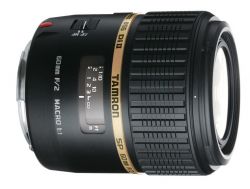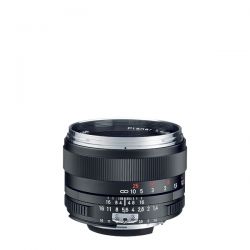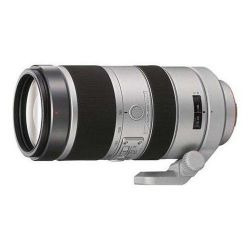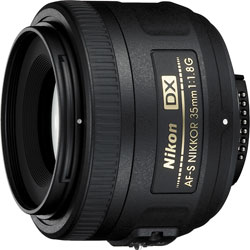 Tamron SP AF60mm F/2.0 Di II MACRO 1:1
Tamron SP AF60mm F/2.0 Di II MACRO 1:1Tamron has announced a new macro lens. The lens is called Tamron SP AF60mm F/2.0 Di II MACRO 1:1 and according to Tamron this lens is the only one in its class.
The Tamron lens will be available for Canon, Sony and Nikon mounts plus a special version with built in motor for auto focus on the Nikon D40, D40x and D60 DSLR camera bodies.
It is not known when the Tamron SP AF60mm F/2.0 Di II MACRO 1:1 lens will be out on the marked or how much it will cost.
Press release:
Cologne, March 24th, 2009 – Tamron Co., Ltd, a comprehensive manufacturer of optical products with its head office in Saitama City, announced the development of the SP AF60mm F/2.0 Di II LD (IF) MACRO 1:1 (Model G005), a life-size macro lens designed exclusively for digital SLR cameras with APS-C size image sensors** that offers a fast maximum aperture of F/2.0.
The SP AF60mm F/2.0 Di II LD (IF) MACRO 1:1 (Model G005), covering an equivalent angle of view of 93mm when converted to the 35mm format*** and boasting a maximum aperture of F/2.0—one stop faster than the F/2.8 maximum aperture found on conventional macro lenses in the same class—is a fast life-size macro lens that delivers dramatically attractive blurred background effects.
The new life-size macro lens from Tamron is expected to be made available in mounts for Canon, Nikon (with built-in AF motor) and Sony. Price and launch dates will be announced at a later date.
Development Concept
Tamron’s macro lenses (SP AF90mm F/2.8 Di MACRO 1:1 (Model 272E), SP AF180mm F/3.5 Di MACRO 1:1 (Model B01) are world renowned for their outstanding optical performance. Particularly, the Tamron SP AF90mm macro lens first introduced in 1979 and subsequently upgraded and renewed seven times since has been highly evaluated by many photographers as a lens that delivers not only attractive out-of-focus effects and sharp descriptive performance in macro photography with its easy-to-use focal length, but also as a lens ideal for portraiture.
Amid the growing popularity of APS-C size DSLRs, Tamron recognizes that there are many photographers who wish to enjoy macro photography with a focal length that provides an angle of view equivalent to 90mm.
Tamron therefore developed the SP AF60mm medium telephoto macro lens to meet the desire of those users and goes a step further by providing the extremely fast and desirable maximum aperture of F/2.0. The SP AF60mm is a high performance and versatile lens that is suitable not only for macro photography of textiles, small creatures, flora and more, but also for portraiture by making good use of its easy-to-use focal length, fast maximum aperture and high optical quality even in low-lit conditions.
Optical Features
Medium telephoto 1:1 life-size macro lens featuring a fast maximum aperture of F/2.0 that strikes a fine balance between attractive out-of-focus effects and sharpness
The SP AF60mm is a medium telephoto macro lens designed for APS-C size digital SLR cameras that realizes the fast maximum aperture of F/2.0 for the first time in the world****. Using an optical design approach that attaches methodical importance to optical quality, Tamron’s optical designers have successfully controlled complex movements of respective lens groups in order to restrain the increase in aberration changes due to the fast maximum aperture, thus achieving outstanding depictive performance that is uniformly sharp from the center to the periphery.
Since the maximum aperture of F/2.0 provides a depth-of-field that is shallower than that of conventional F/2.8 lenses, the new lens enables the user to expand the range of the macro photographic expression. The SP AF60mm developed by combining Tamron’s accumulated macro lens design know-how is an attractive lens that maintains a well-balanced relationship between sharp image performance and beautiful out-of-focus background effects.
Employment of special low-dispersion glass elements
The lens employs two large LD (low dispersion) glass elements in its first group to thoroughly compensate for various aberrations and attain high optical quality.
Working distance of 100mm, the longest distance among lenses in this class*****
Tamron has realized the long working distance of 100mm from the front element of the lens to the subject in 1:1 life-size macro photography. The long working distance allows the user to take macro shots while maintaining a sufficient distance from such subjects like timid insects that are likely to escape if you move in too close. Also, with this longer working distance, you can prevent capturing the shadow of the lens barrel as is often the case with conventional macro lenses with insufficient working distances.
Meticulous countermeasures against ghosting and flare
Tamron employed new BBAR (Broad-Band Anti-Reflection) multi-layer coatings in order to ensure optimum performance in all photographic situations. The new BBAR coatings enhances the light transmission factors in both the short and long wavelength ranges, a condition that was thought incompatible with conventional anti-reflection coating technology. In addition, Tamron employs internal surface coatings (coatings on cemented surfaces of lens elements) for sharpness, high color reproduction performance and superior color balance.
Mechanical Features
Lightweight and compact macro lens boasts F/2.0 fast maximum aperture
In order to prevent the lens from becoming bulky due to the fast F/2.0 maximum aperture, Tamron’s mechanical engineers thoroughly reviewed the internal constructions of conventional macro lenses and improved the accuracy of precision components by combining Tamron’s accumulated mechanical engineering techniques. Through the employment of precision injection-molded engineering plastic parts with high reliability, Tamron realized a compact body that measures only 73mm ( 2.9in.) in its maximum diameter and weighs a mere 400g (14.1oz.).
Internal focusing system for enhanced ease of use
The lens employs an internal focusing (IF) system without changing the overall length of the lens due to focusing. Since the front group of the lens does not extend, the lens is particularly easy to use in close focusing ranges. Tamron has realized the working distance of 100mm, the longest distance among lenses in this class******. The internal focusing system combined with new optical solutions to realize this longer working distance allows the user to enjoy macro photography comfortably while maintaining an adequate distance from subjects.
Full-time manual control mechanism
Delicate focusing control is essential in macro photography. The lens incorporates a full-time manual control mechanism that enables the user to manually adjust focus without engaging the AF/MF switch-over button, even when in the auto-focus mode. In addition, the lens employs a large focus control ring to ensure a solid grip and precise control when manually focusing.
Simple and attractive outer design
The lens employs a new outer design that is more refined and smoother in its overall contours by minimizing concavity, convexity and variations in its profile to match various digital SLR cameras. The lens barrel features a delicate matte finish, which enhances the high quality appearance of the lens.
*Tamron’s conversion value is 1.55X.
** Di II lenses are designed exclusively for use with digital SLR cameras equipped with APS-C size image sensors and employ an optical system optimized for the characteristics of those digital cameras. Di II lenses are not designed for use with 35mm film cameras or digital SLR cameras with image sensors larger than 24 x 16mm.
*** The special note “APS-C size equivalent” is hereinafter omitted.
****As of February 1, 2009, according to our research of 50-60mm life-size macro lenses
*****As of February 1, 2009, according to our research of 50-60mm life-size macro lenses
******As of February 1, 2009, according to our research of 50-60mm life-size macro lenses




